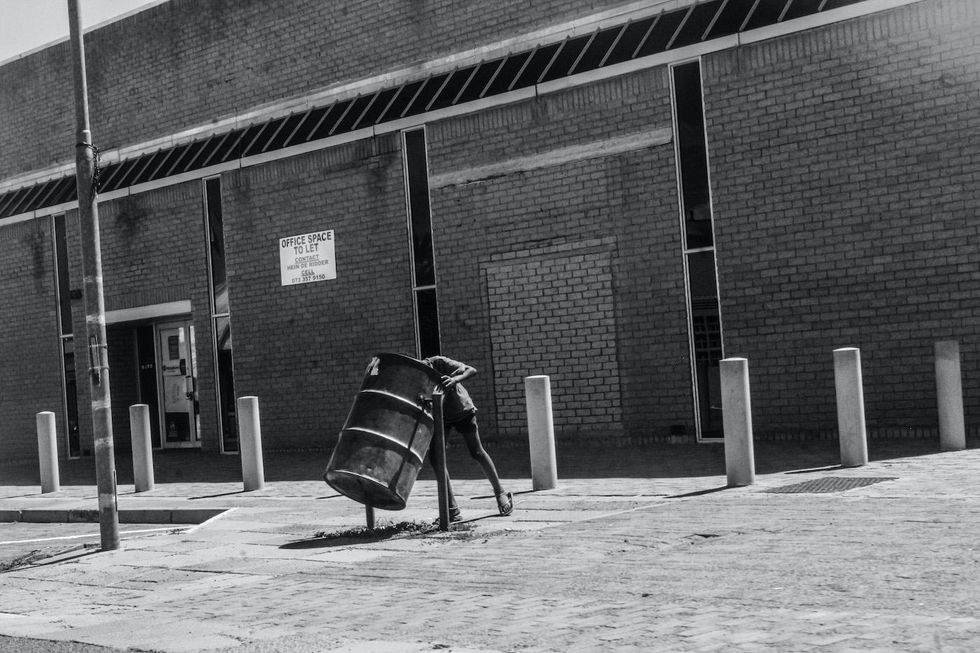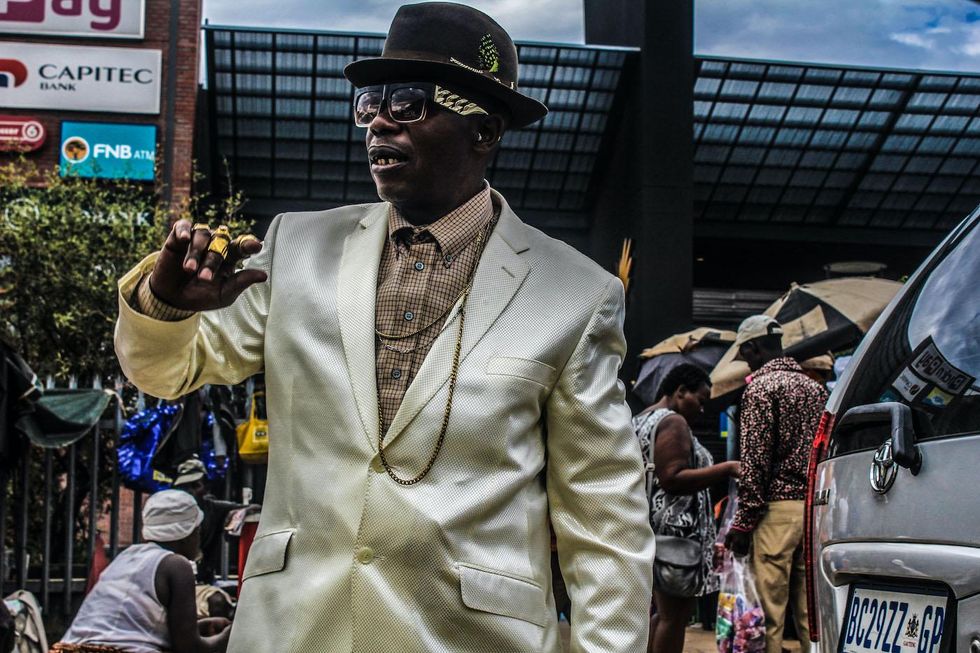Toka Hlongwane’s Photo Series ‘Impilo ka Darkie’ Aims to Give an Insight Into Black South Africans’ Experiences
With his latest photo series, 'Impilo ka Darkie', South African photographer Toka Hlongwane offers an imperfect but compelling insight into the lives of the people he has encountered through his travels.

The Rider (2017), Mashishing, Limpopo.
Toka Hlongwane is a Johannesburg-based documentary photographer whose work often casts a lens on society's underclass. His most recent photo series, Impilo ka Darkie, shot over five years, is Hlongwane's attempt to answer two questions: what does it mean to be Black? And, above that, what is the measure of Black life?
Part of Impilo ka Darkie's appeal is that it also documents Hlongwane's growth as a photographer. As the years roll on, his composition becomes stronger, the focus on his pictures becomes much sharper and a storyline begins to emerge in his work.
"I moved to Cape Town in 2014," says the Thokoza-born photographer over the phone. "But two years into my stay, there were small things about the city that made me realise impilo ka darkie (black life) is shit. Cape Town is one of those places that make you realise you're Black. Head to the CBD in Jozi and there's a Black person on every street corner; even in some of the most secure suburbs, there's some sort of Black presence around. That's not the case in Cape Town. Something about that realisation made me want to interrogate what it means to be Black."

As a result, in 2019, he released a photo series called "The People of Hanover". The series is a compendium of candid moments in the Cape Town township, Hanover Park. There are shots of laundry flailing in the wind, groups of men lounging about on a street corner, and children playing cricket under clear blue skies.
"I wanted to see what life in the Cape Flats was like for them," he would later write of the series. "On my off days [from work], I set out to spend time in one of the gangster-ridden communities of the Cape Flats, home to some of the most notorious gangs in South Africa: the Mongrels, Americans, and Hard Livings." The motivations for Impilo ka Darkie are similar, just set in different places.
Anonymous set of Black bodies
One of Impilo Ka Darkie's earliest dated images, Who Is Coming To Dinner, was shot in 2016 in Johannesburg's CBD. The sight; a trolley full of cow heads is a common sight in inner-city Joburg. But as a single image, it is stripped of meaning. One looks at the picture and wonders what its implicit meaning is or what piece of insight Hlongwane was trying to make with it.
One of the problems of documentary photography is illustrated in two photos from Hlongwane's series, Let Them Work To Get Home (2018) and Dark Xmas (2018). The former was shot in Parow, Cape Town and features a moving mass of crowd, swarming around a train in the hopes of occupying it. The photo is mostly out of focus, so one cannot make out the faces that make up the crowd. Whether this was intentional or not isn't clear, but the effect is startling: a crowd of Black people on their way back from work, reduced to an anonymous set of black bodies. It has the opposite effect Hlongwane intended when he started making the work which was to humanise Black people.

The Waiters (2017) features a trio of tired bodies in an unnamed train station in Soweto. Similarly, Dark Xmas features a Dutch-tilt style shot of a boy in the Karoo digging through a dustbin for a bite to eat on Christmas Day. The shot itself is composed beautifully, and the immediate reaction is to give pause to the idea that Santa might have forgotten the Karoo when he was handing out Christmas cheer in 2018. But, again, who is the boy in this picture? Did he know such an intimate moment was being captured as the events were unfolding? But more importantly, is this what defines black life: struggle, solemnity and gut-wrenching poverty?
"I'm aware of how it may come off," says Hlongwane. "I think that's one of the limitations of documentary photography: you want to capture an authentic moment and for that to happen, it has to be spontaneous. I try to be as respectful as possible, but I know it's a problem. You're essentially stealing a moment but you try your best to steal it with respect. That picture, for example, it was Christmas in the Karoo. I was driving around and saw this homeless kid. I just wanted to highlight his plight. If I asked him, it would have been staged and I wouldn't get the shot I wanted. But I spoke to him afterwards and he was cool with it."
"I'm more than my struggle"
Istayela Baba Wam (2017) is a picture of a dapper old man in Johannesburg's CBD dressed to the nines with gold rings, gold chains and gold-tinged spectacles.

"I like that image quite a lot," he says of Istayela Baba Wam. "For me, fashion is more than just an expression of style, it says something about who we are. That old man reminded me of those dudes you might see in the hood; they might be poor but they're the most iced-out dudes you know. We all know someone like that. That should tell you, man: even our sartorial choices are political. It's like 'I might be broke but I'm more than my struggle.'"
With Impilo ka Darkie, Hlongwane has offered us an imperfect but compelling insight into the lives of the people he has encountered through his travels. Whether this is the sum total of Black experience will be up to the viewer to decide.
You can view more of Hlongwane's work on his Instagram and Behance pages.
- Zanele Muholi Documents Queer South African Lives In 'Faces And ... ›
- Kgomotso Neto Exhibits Street Art at South African Taxi Rank ... ›
- Cedric Nzaka Debuts Photographic Coffee Table Book - OkayAfrica ›
- This South African Photographer is Changing How People See ... ›
- Meet the South African Street Photographer Capturing Photos of ... ›
- South African Photographer Zanele Muholi on Queering the Zeitz ... ›
- Black Social Photography in South Africa: Before & After - OkayAfrica ›
- South African Photographer Santu Mofokeng's 'Metaphorical ... ›
- These Are 8 Emerging African Photographers You Need To Know ... ›
- These Portraits by African Photographers Reveal the Power In Self ... ›

